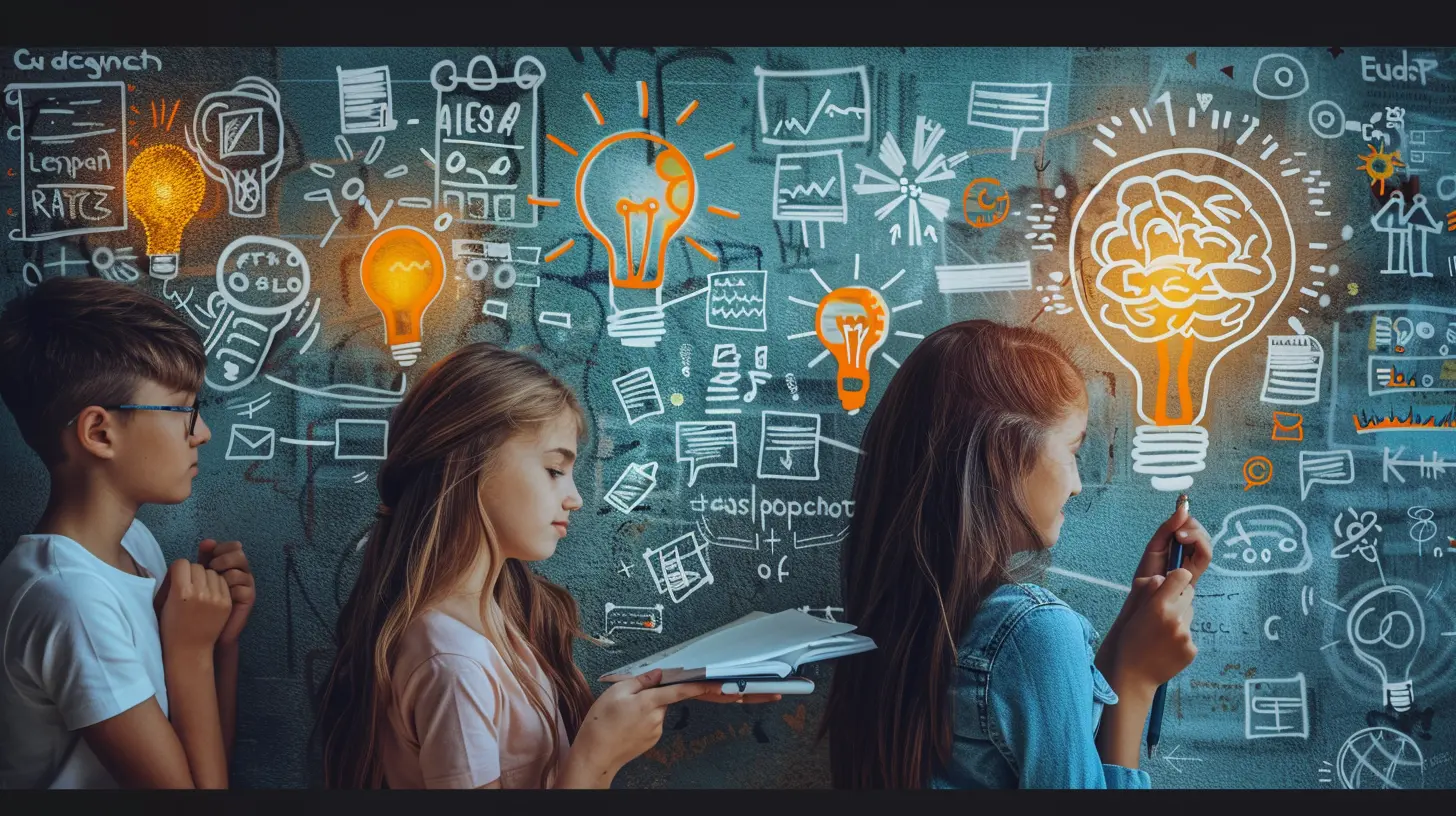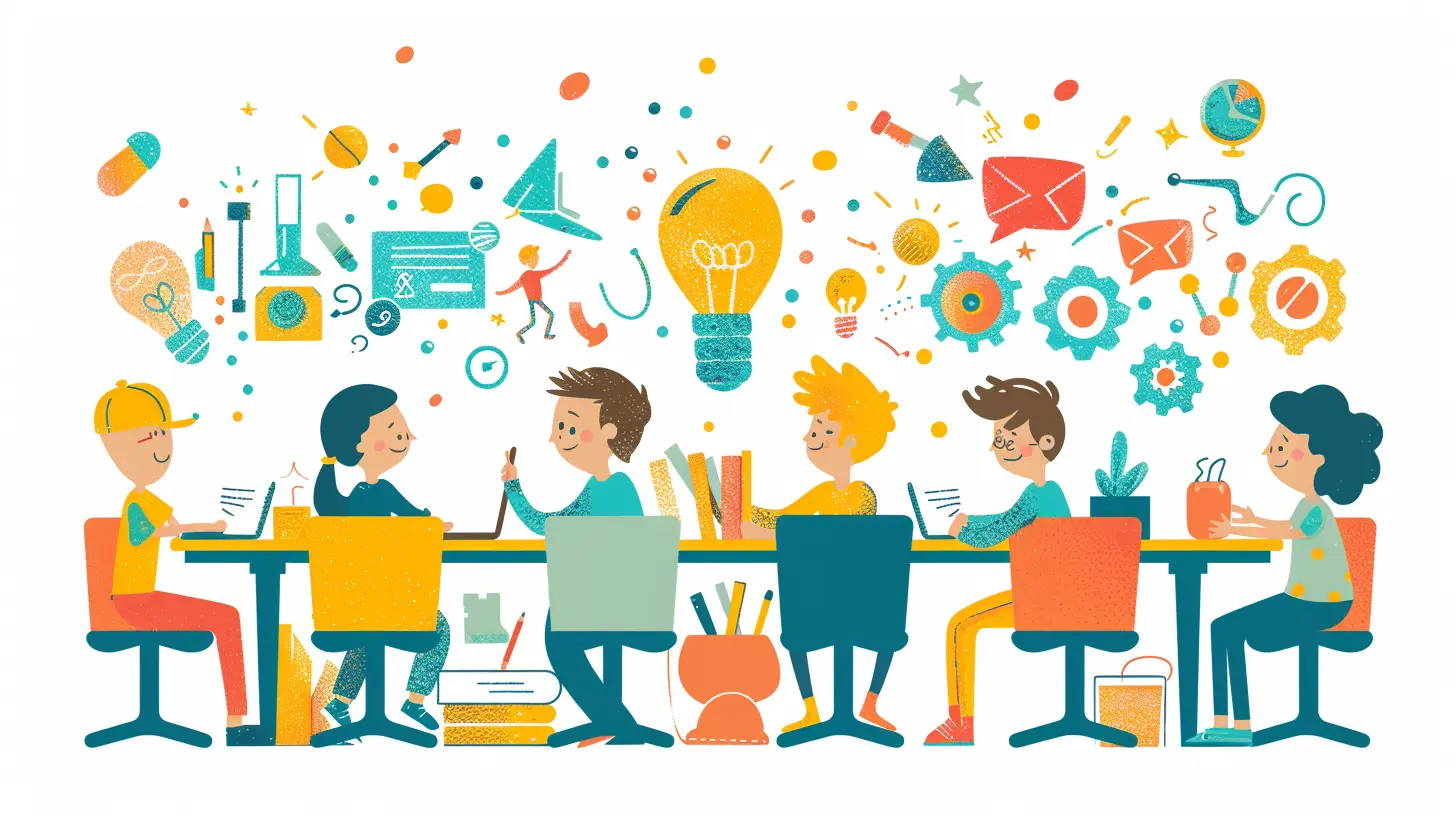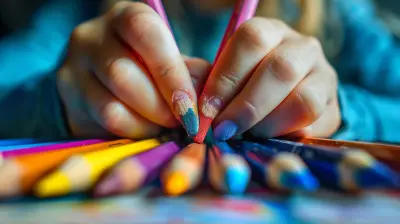Enhancing Student Engagement Through Active Learning
14 June 2025
Keeping students engaged in the classroom is one of the biggest challenges educators face. With attention spans dwindling and distractions everywhere, traditional lectures often fail to capture students' interest. So how can we make learning exciting, interactive, and meaningful?
Enter active learning—a powerful teaching approach that encourages students to participate, think critically, and take ownership of their learning. But what exactly is active learning, and how can it revolutionize education? Let’s dive in! 
What Is Active Learning?
Active learning is all about involvement. Instead of passively listening to a lecture, students engage in activities that require them to analyze, discuss, create, and reflect. This could be anything from group discussions and problem-solving exercises to hands-on projects and role-playing scenarios.The goal? To make learning a two-way street rather than a one-way flow of information. When students actively participate, they retain information better, develop critical thinking skills, and stay motivated to learn. 
Why Student Engagement Matters
Before we explore how to enhance engagement through active learning, let's understand why engagement is crucial in the first place.1. Better Retention – When students are engaged, they absorb and retain information more effectively. Active participation helps solidify concepts in their memory.
2. Increased Motivation – Engaged students feel more connected to the material, leading to a natural desire to learn and explore further.
3. Improved Critical Thinking – Active learning encourages students to analyze information, ask questions, and think outside the box.
4. Stronger Social Skills – Many active learning strategies involve collaboration, helping students develop communication and teamwork skills.
With these benefits in mind, let’s look at some powerful strategies to enhance engagement through active learning. 
Effective Active Learning Strategies
1. Group Discussions and Debates
Encouraging students to talk about what they’re learning fosters curiosity and allows them to see different perspectives. Group discussions and debates make lessons more dynamic and engaging.- Assign controversial topics related to your subject to spark debate.
- Use the Socratic method, where students answer questions with further questions, deepening their understanding.
- Set up think-pair-share activities where students first think individually, then discuss with a partner, and finally share with the class.
Discussions and debates don’t just improve engagement—they also prepare students for real-world communication and critical thinking challenges.
2. Gamification: Turning Learning Into Play
Who doesn’t love a good game? Gamification integrates game-like elements such as points, rewards, and challenges into learning.- Use online quiz platforms like Kahoot! or Quizizz to make assessments fun.
- Create a classroom leaderboard to encourage friendly competition.
- Design escape room challenges where students solve problems to "break out."
By tapping into students' natural love for games, you make learning enjoyable while reinforcing key concepts.
3. Problem-Based Learning (PBL)
Instead of giving students direct answers, challenge them with real-world problems. PBL pushes students to research, collaborate, and develop solutions on their own.- Have science students design eco-friendly solutions to environmental issues.
- Let history students recreate historical events, making decisions as if they were real participants.
- In math, have students apply concepts to real-life budgeting or finance problems.
This approach mimics real-life problem-solving and makes learning more relevant.
4. Flipped Classroom Model
A flipped classroom reverses traditional learning. Instead of listening to lectures in class and doing homework at home, students review content (videos, articles, or presentations) at home and then apply it in class.- Pre-record video lectures for students to watch before arriving at class.
- Use class time for hands-on activities, discussions, and problem-solving exercises.
- Allow students to lead group learning, presenting concepts to their peers.
This method frees up classroom time for deeper discussions, creativity, and interaction.
5. Technology Integration
Students are digital natives, so why not leverage technology to keep them engaged?- Use interactive apps like Padlet or Nearpod for collaborative discussions.
- Incorporate Augmented Reality (AR) or Virtual Reality (VR) to bring lessons to life.
- Allow students to create multimedia presentations, podcasts, or videos instead of traditional essays.
When used effectively, technology can transform passive learning into an immersive experience.
6. Role-Playing and Simulations
Role-playing helps students step into someone else’s shoes and see topics from different perspectives.- In literature, have students act out scenes from a book.
- For business classes, set up a Shark Tank-style pitch competition.
- In history, let students recreate significant historical moments and debate their impact.
This hands-on approach makes abstract topics more tangible and memorable.
7. Peer Teaching: Learn by Teaching
They say the best way to learn is to teach someone else. When students explain concepts to their peers, they deepen their understanding.- Assign small groups to teach mini-lessons to the class.
- Use peer review sessions where students give constructive feedback on each other's work.
- Organize teaching rotations, where each student becomes an expert on one topic and teaches it to others.
Not only does this foster collaboration, but it also builds confidence and mastery of the subject. 
Overcoming Challenges in Active Learning
While active learning has huge benefits, some challenges can arise. Here’s how to tackle them:- Student Resistance – Some students prefer passive learning because it feels "easier." Ease them in with small interactive activities before diving into complex strategies.
- Time Constraints – Teachers already have packed schedules. Start by replacing one traditional lecture per week with an active learning method.
- Assessment Difficulties – Assignments in active learning may not fit traditional grading structures. Use rubrics, peer assessments, and project-based evaluations to assess engagement.
The Future of Active Learning
As education evolves, active learning is becoming the norm rather than the exception. With the rise of ed-tech, personalized learning, and hybrid classrooms, engagement strategies continue to expand.The future classroom will be one where students are not just taking notes, but actively shaping their education. By embracing active learning, we empower students to think critically, collaborate, and become lifelong learners.
So, educators—why stick with outdated methods when you can make learning an exciting adventure? Try out some of these strategies, and watch your students light up with curiosity and enthusiasm!
all images in this post were generated using AI tools
Category:
Educational PsychologyAuthor:

Eva Barker
Discussion
rate this article
2 comments
Eden McKnight
Great article! Active learning truly transforms the classroom experience. It's amazing how engaging students can turn passive learning into dynamic discussions and collaborations. I love the practical strategies you shared—definitely going to implement some of these in my teaching. Thanks for the inspiration!
November 8, 2025 at 5:11 AM

Eva Barker
Thank you for your kind words! I'm thrilled to hear that you found the strategies inspiring and plan to implement them in your teaching. Happy engaging!
Emily Love
Active learning transforms classrooms into vibrant spaces where curiosity thrives and students take ownership of their education. By embracing these dynamic strategies, we can ignite passion and foster deeper connections, paving the way for a brighter, engaged future.
June 24, 2025 at 4:47 AM

Eva Barker
Thank you for your thoughtful comment! I completely agree—active learning truly cultivates an engaging environment that empowers students and sparks their passion for learning.


